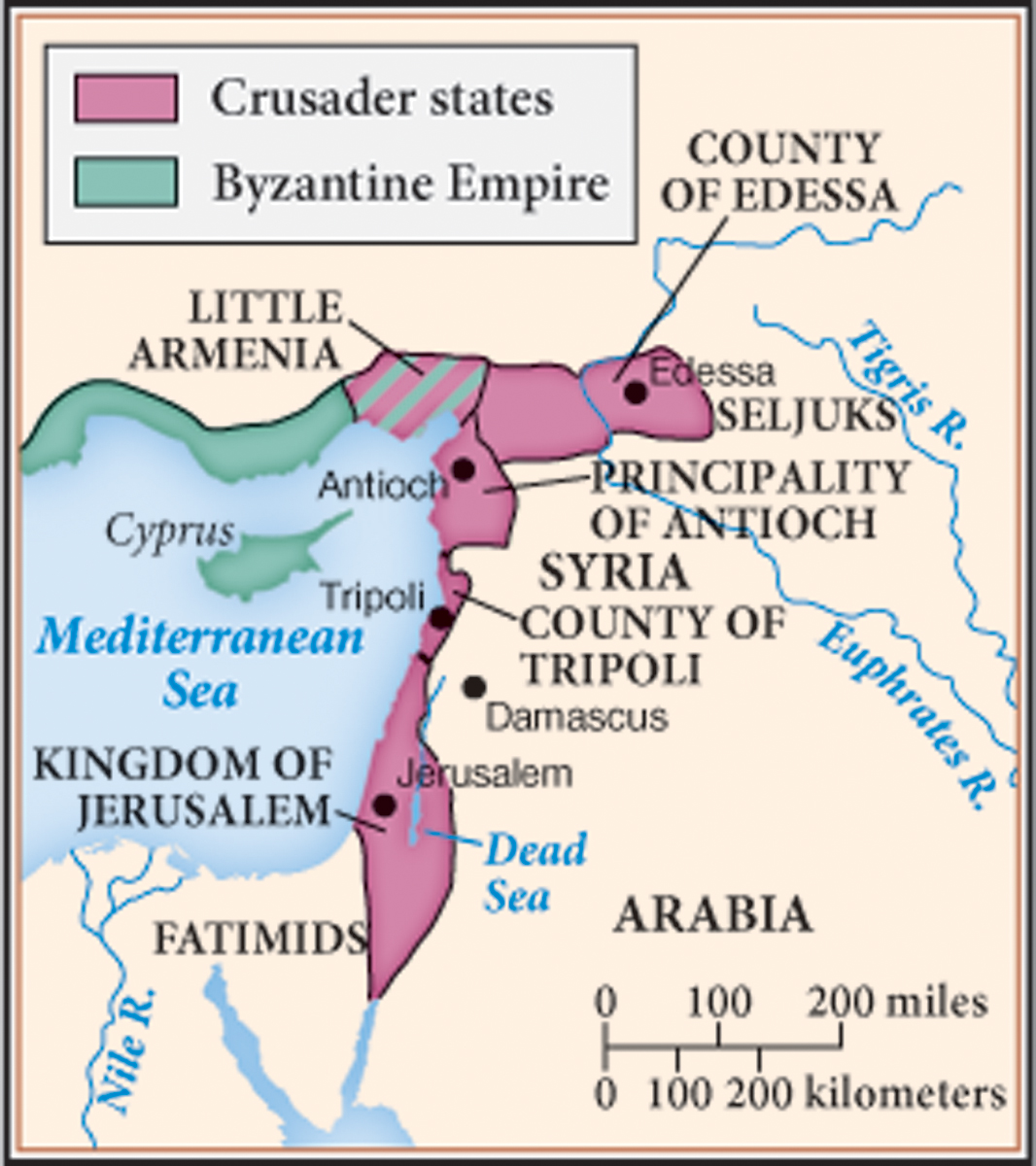The Crusader States
Printed Page 335
Important EventsThe Crusader States
The main objective of the First Crusade—to wrest the Holy Land from the Muslims and subject it to Christian rule—had now been accomplished. The leaders of the expedition did not give the conquered territories to Alexius but held on to them instead. By 1109, they had carved out several tiny states in the Holy Land.

Because the crusader states were created by conquest, they were treated as lordships. The rulers granted fiefs to their vassals, and some of these in turn gave portions of their holdings as fiefs to their own vassals. Since most Europeans went home after the First Crusade, the rulers who remained learned to coexist with the indigenous population, which included Muslims, Jews, and Greek Orthodox Christians. They encouraged a lively trade at their ports.
The main concerns of these rulers were military. They set up castles and recruited knights from Europe. So organized for war was this society that it produced a new and militant kind of monasticism: the Knights Templar. The Templars vowed themselves to poverty and chastity. But unlike monks, the Templars, whose name came from their living quarters in the area of the former Jewish Temple at Jerusalem, devoted themselves to warfare. Their first mission—to protect the pilgrimage routes from Palestine to Jerusalem—soon diversified. They manned the town garrisons of the crusader states, and they transported money from Europe to the Holy Land. In this way, the Order of the Templars became enormously wealthy (even though individual monks owned nothing), with branch “banks” in major cities across Europe.